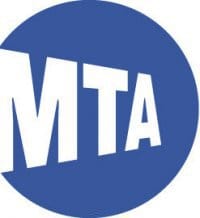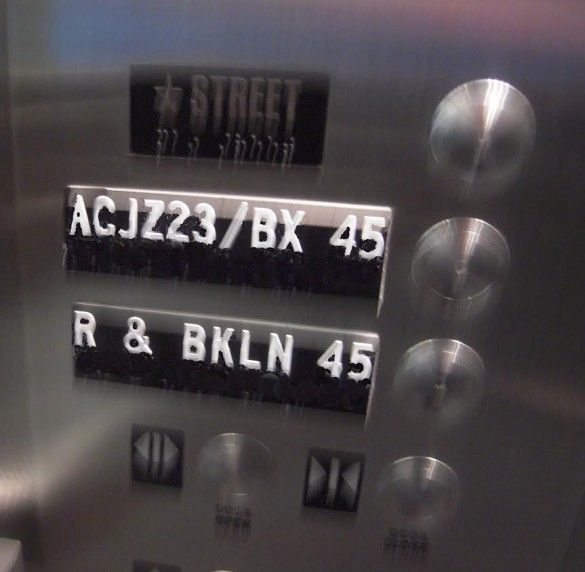The Commute: Why Does The MTA Give Out So Much Incorrect Information?


THE COMMUTE: In answer to the question posed in the headline, it is because they don’t care enough, since they do not place themselves in the position of passengers who are making decisions. Customer service is just not a high priority. It is a theme we keep coming back to. The last time we discussed it was back in August. At the end of that article I linked to two posts from blogger David Gerber, in which he went into excruciating detail about how the MTA provides misinformation. He has since written three more posts detailing the MTA’s misinformation and / or lack of information. In part three of his series from this past August, he discusses passengers having to endure the cold because of inadequate public information regarding the MTA’s winter service plans. In September, he wrote about how track work on the M train resulted in conflicting announcements about the service change.
In writing about public information screw-ups on opening day of the Fulton Transit Center last month, Gerber discusses riders being deprived of their free transfer due to the temporary public closure of some passageways, so dignitaries could hold their press conference for invitees and the press. No information was available at the station or on the MTA website regarding how passengers were to make their transfer. Rather than repeat the details, let me just quote his conclusion:
“For all the hype about Fulton Center and the willful omission of a service change which should have been posted proves one thing — they don’t care about disseminating the correct information to their customers… Maybe we need new management who should have more of a concern about how they communicate to their customers before they showcase the next ‘grand destination and meeting place’ than their paychecks.”
At least I am not the only one criticizing the MTA when it comes to disseminating public information and their lack of caring for the public.
The Fulton Transit Center
On a recent trip to Lower Manhattan, I decided to check out the new $1.4 billion Fulton Transit Center. Since I am not an expert in construction, nor am I familiar with the depth of work needed to be done, I can’t really comment on whether the project is worth the cost or not. I will say that the transfer between the northbound 4 / 5 and A / C trains is much improved so that the crowding is eased in the first two cars of the Lexington Avenue northbound trains.
However, one would expect that, after 13 years of planning and so much money expended, everything would be just perfect. That was not the case. An escalator and elevator failed during the first week of operation. However, since public information is what interests me, that is what I will focus on here.
My first thought was “How should I get there?” My destination actually was the World Financial Center. I intended to visit the Fulton Center on my way home. I was going to take the Q and change for the R at DeKalb. However, knowing how infrequently the R operates and how desolate DeKalb Avenue is on a Sunday, I decided to change instead at Atlantic Avenue for the 2 or 3, which also gets me closer to the west side. My first mistake was not first checking the weekend service changes.
As it turned out, both the 2 and 3 were not operating in Brooklyn that weekend so I had to take the 4 or 5 to the Fulton Transit Center instead and walk a few blocks further to the World Financial Center. No big deal so far. Then the problems begin. At Nevins Street, the automated announcements advised that a transfer is available to the 2 and 3. The announcement was repeated at Borough Hall and at Fulton Street. That meant the same incorrect announcement was also made at Utica, Franklin and Atlantic avenues, where neither the 2 nor the 3 train were operating.
The MTA spent enormous sums of money on digital signs, maps, and automated announcements. Their purpose was to provide increased flexibility and better information. However, they may not be flexible enough to suspend automated transfer information during service changes. If that is the case, the subway conductor must correct the misinformation at each of these six stops. That did not happen.

Upon arriving at the Fulton Transit Center, I wanted to check out the new passageway to the R since that would take me further to the west side. When entering the complex, one is greeted with a large sign showing you a list of trains (the A, C, J, Z, R, 2, 3, 4, and 5). One’s assumption is that you should enter here to get those trains. But should you? (Connections to the 1, E, and PATH are also planned but are still unopened.)
The answer is no. Only the A, C, 4 and 5 uptown are directly and readily accessible. Accessing the other lines require walking through subway platforms, using underpasses or walking up and down additional flights of stairs or searching for an elevator. It was not possible to actually relocate any of the subway lines despite the huge sums of money that were spent. With the exception being during inclement weather, it is faster and easier to use alternative entrances for the other lines.
For example, why deal with an escalator, a passageway and walking up a flight of stairs, or search for and wait for an elevator to access the 4 downtown, when you can simply cross the street and access that train directly using only one short stairway?
However, there is no information advising which entrances involve the fewest stairways or how to get there on the street. Given all the money spent on technology displays at this station, it is inexcusable that as soon as you enter you do not see a large neighborhood map displaying where these other entrances are that would allow you to exit the center if you so desire and to use an alternate entrance. Instead, the signs invite you inside so you can walk extra platforms, passageways and stairways.
I took the escalator down for the R train as directed. However, once downstairs, I had to walk all around searching for another sign to lead me to the elevator for the R passageway.
Once in the elevator, there are two buttons to push. One read: “ACJZ23/BX 45.” The other says “R & BKLN 45.” There were no circles around the letters or even commas between the designations. No one abbreviates Brooklyn as “BKLN.” Why wouldn’t a tourist who doesn’t know any better assume those letters mean the B, K, L and N lines? Sorry, but “BKLN 45” sounds more like a Brooklyn Nets jersey than directions to the Brooklyn-bound 4 and 5 trains. A few commas for clarity certainly would have not increased the $1.4 billion price tag. Just as the MTA does not care enough to see that its directions for temporary reroutes are complete and accurate, neither do they care much about their permanent signage.
Why would you display a large R at all times when, after midnight, the R is replaced by the N and does not even operate at this station? Why not have an R that can change to an N after midnight? They spend a fortune on technology, only to disseminate incorrect information.
Arriving at the R train, I discover that there is no exit to the street without first paying another fare to enter the R platform. Hopefully that will be corrected when the passageways to the PATH, E and 1 trains are opened. That raises the question as to why all the subways in the complex aren’t accessible for the same fare? Increased system flexibility is always convenient when there are service outages due to emergencies or planned service changes due to construction.
Finally, upon walking up to the R platform at Cortlandt Street, I couldn’t help but notice the refurbished station with directions to the “Hudson Tubes.” I am all for preserving history. However, that sign will not help anyone find PATH as it has been known for over 50 years. How much more would it have cost to make a couple of tile signs in the same style saying PATH, and placing it over the Hudson Tubes sign? Just another example how providing clear and accurate information is not something the MTA cares at all about because their customers are just not important to them.
The Commute is a weekly feature highlighting news and information about the city’s mass transit system and transportation infrastructure. It is written by Allan Rosen, a Manhattan Beach resident and former Director of MTA/NYC Transit Bus Planning (1981).
Disclaimer: The above is an opinion column and may not represent the thoughts or position of Sheepshead Bites. Based upon their expertise in their respective fields, our columnists are responsible for fact-checking their own work, and their submissions are edited only for length, grammar and clarity. If you would like to submit an opinion piece or become a regularly featured contributor, please e-mail nberke [at] sheepsheadbites [dot] com.



